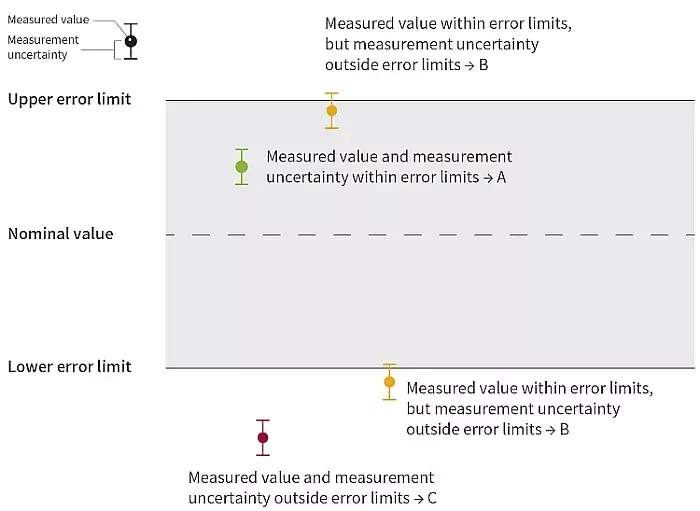09/22/2022
Monitoring volumetric instruments with calibration software
Patrick Jost, BRAND GMBH + CO KG
The precise delivery of liquid volumes is essential in many processes in the laboratory in order to obtain good and reliable quality results. The areas of application are manifold, for example industrial filling processes (does my customer receive the contractually agreed quantity of the substance?), clinical diagnostics (have I added the correct quantity of detection reagent to the patient sample?) or analytical-chemical detection processes (can I trust the result of the titration performed?). When a user works with liquids in a chemical, biological or clinical laboratory, the question of the correct volume is always present.
What is important when calibrating?
In the field of volume determination with reference to the relevant standards, calibration usually means that the volume delivered by the device is recorded gravimetrically with a balance.
To calibrate the volume-delivering instrument, it is necessary to know the density of the liquid used at the measurement temperature, as well as the air temperature, air pressure and relative humidity prevailing during the measurement. Furthermore, the cubic thermal expansion coefficient of the material, or in the case of liquid handling devices, the temperature-dependent effects on the measured volume of the device must be taken into account - if these are specified by the manufacturer.
All these parameters are combined in a formula to form the so-called correction factor Z, which can then be used to convert the mass of the dispensed liquid quantity into the actual dispensed volume. This value can then be set against the error limits from the associated standard or the tolerances from the manufacturer's specifications.
Various directives and standards also require consideration of the measurement uncertainty of the test method. The measurement uncertainty is the uncertainty of the measurement procedure as used by the user or tester in the respective calibration laboratory. If it is not possible to determine the actual measurement uncertainty for the respective measurement procedure in the respective calibration laboratory, the measurement uncertainty must be estimated. In reality, however, it should not be higher than ⅓ of the error limit.
What to do in case of deviations?
Should the calibration fail or be completed partly outside the error limits, the device and also the test procedure must be closely examined. The following questions, among others, must be answered: Is the device tight? Is the device clean? Are there no defects? Has the test procedure been carried out correctly?
If all critical questions can be answered with yes, it can be assumed that the determined volume of the device is correct. To confirm this, a repetition of the calibration is recommended. Now, one could record the determined deviation in one's documentation for the specific device and include it as a correction value the next time the volume is dispensed. In practice, however, this is not done.
Liquid handling devices are adjusted in this case, which means that the device is adjusted, e.g. by changing the piston stroke, so that the volume displayed on the scale corresponds to the volume actually dispensed. Volumetric instruments made of glass or plastic that do not pass calibration should be replaced, as they cannot be readjusted.

Fig.1: Measurement uncertainty and error limits
Measuring and test equipment monitoring in the laboratory
The monitoring of measuring and test equipment in accordance with GLP/GMP and DIN EN ISO 9001, among others, requires companies to regularly check their liquid handling devices such as micropipettes and volumetric instruments such as glass burettes. It is advisable to use professional calibration software for the calibration and documentation of the history of your instruments.
The new EASYCAL™ 5 calibration software from BRAND supports structured entry of the master data of your instrument data, inspection plans and test equipment and counteracts duplicate entries and general data proliferation. To make it easier to get started, more than 1500 article master data records have already been entered and error limits or tolerance values have been stored in more than 2200 ready-made test plans.
The EASYCAL™ 5 calculation formulas are validated and the user can be sure that all relevant environmental parameters are included in the calculation. EASYCAL™ 5 can also communicate directly with the test equipment - interface parameters are already stored for around 100 scale models. In addition, environmental sensors such as electronic hygrometers, barometers and thermometers can also be controlled.
Modern user management separates the various areas such as order processing, master data maintenance and IT infrastructure from the core task of calibrating the equipment. This way, access to modules can be limited to persons who are qualified and authorized.
If you activate the "4-eyes principle" option, test plans, calibration certificates and forms cannot be released by the same user, and without release, no use is possible in test operations. Subsequent changes or the deletion of test data are only possible to a limited extent and are documented by EASYCAL™ 5 with a time stamp and user ID.
Other EASYCAL™ 5 functions help to make test equipment monitoring easier and more efficient. With the calibration history, you keep track of past measurements. The reminder service reminds you by e-mail of calibrations to be performed in the future. The layout of calibration certificates can be edited with the built-in certificate editor and, depending on the language stored, the certificate is immediately printed in the correct national language.
